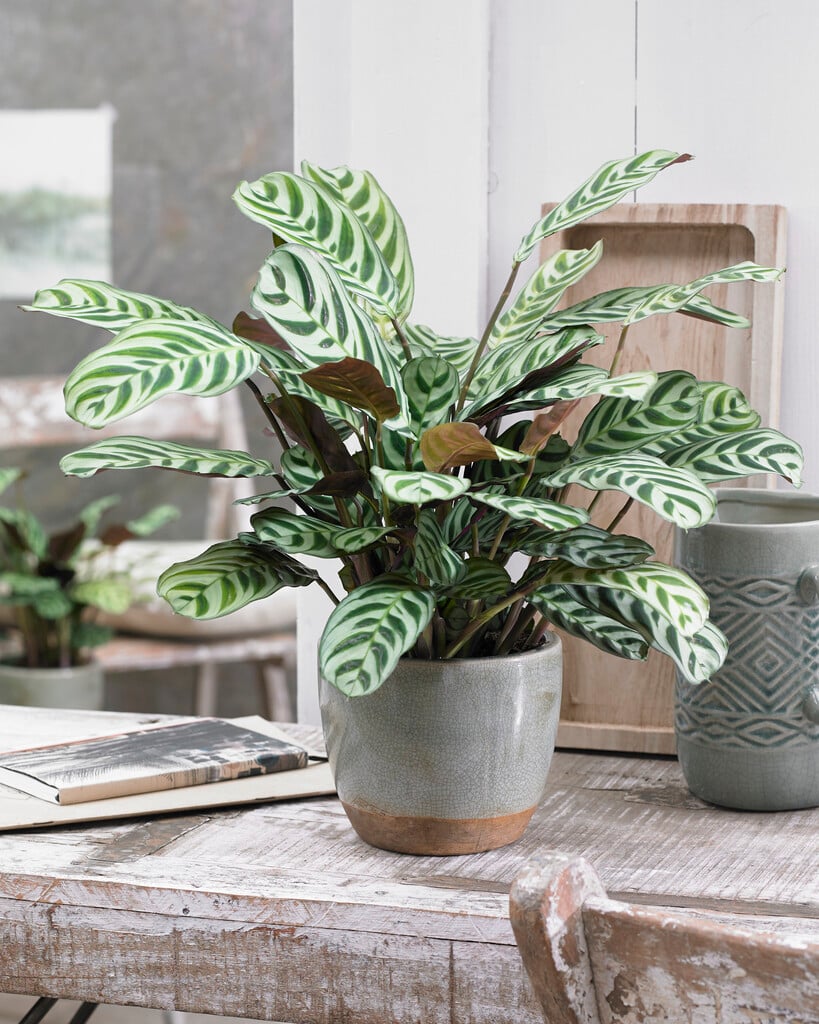Ctenanthe burle-marxii
A tender, evergreen perennial to about 60cm tall, with softly hairy purple-tinged green stems bearing oblong to ovate pale green leaves, marked with dark green bands forming a fishbone pattern, and purple beneath. Small clusters of white flowers may be borne intermittently throughout the year at the ends of long stems
Size
Ultimate height
0.5–1 metresTime to ultimate height
5–10 yearsUltimate spread
0.1–0.5 metresGrowing conditions
Moisture
Moist but well–drainedpH
Acid, Alkaline, NeutralColour & scent
| Stem | Flower | Foliage | Fruit | |
| Spring | White | Green Purple | ||
|---|---|---|---|---|
| Summer | White | Green Purple | ||
| Autumn | White | Green Purple | ||
| Winter | White | Green Purple |
Position
- Partial shade
Aspect
West–facing or East–facing
Exposure
Sheltered Hardiness
H1BBotanical details
- Family
- Marantaceae
- Native to GB / Ireland
- No
- Foliage
- Evergreen
- Habit
- Bushy
- Genus
Ctenanthe are bushy evergreen perennials grown for their usually strikingly patterned, lance-shape to obovate leaves; irregular and usually inconspicuous tubular white or yellow flowers are borne in short racemes intermittently throughout the year
- Name status
Correct
- Plant range
- Brazil
How to grow
Cultivation
Grow indoors in a peat-free, loam-based potting compost (JI No.2) in bright, indirect light. Water freely and apply a general liquid fertiliser monthly from spring to summer. Provide high humidity by placing the container on a tray of moist gravel. Water to keep compost moist in winter, and keep draught-free at a constant temperature. Repot annually in late spring or early summer. See houseplant cultivation for further advice
Propagation
Propagate by seed or by division in spring
Suggested planting locations and garden types
- Houseplants
- Sub-tropical
- Conservatory and greenhouse
Pruning
No pruning required
Pests
May be susceptible to mealybugs
Diseases
Generally disease-free
Get involved
The Royal Horticultural Society is the UK’s leading gardening charity. We aim to enrich everyone’s life through plants, and make the UK a greener and more beautiful place.
